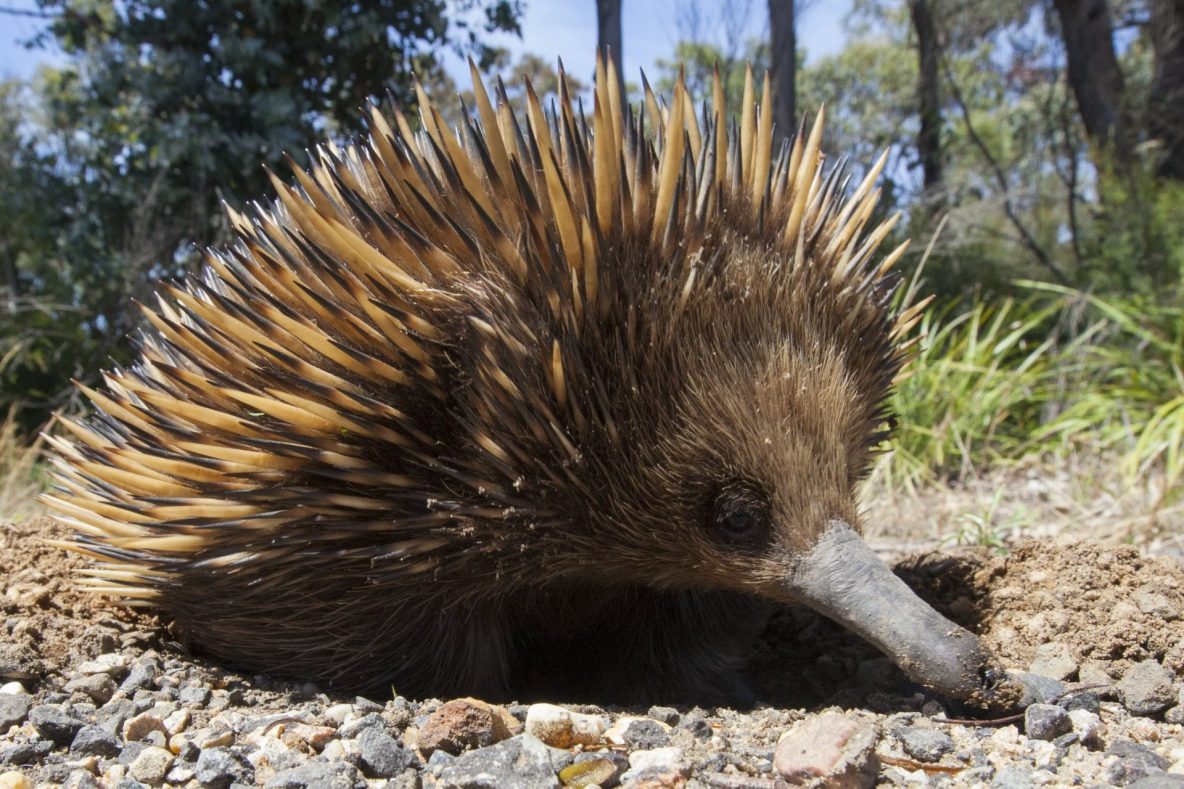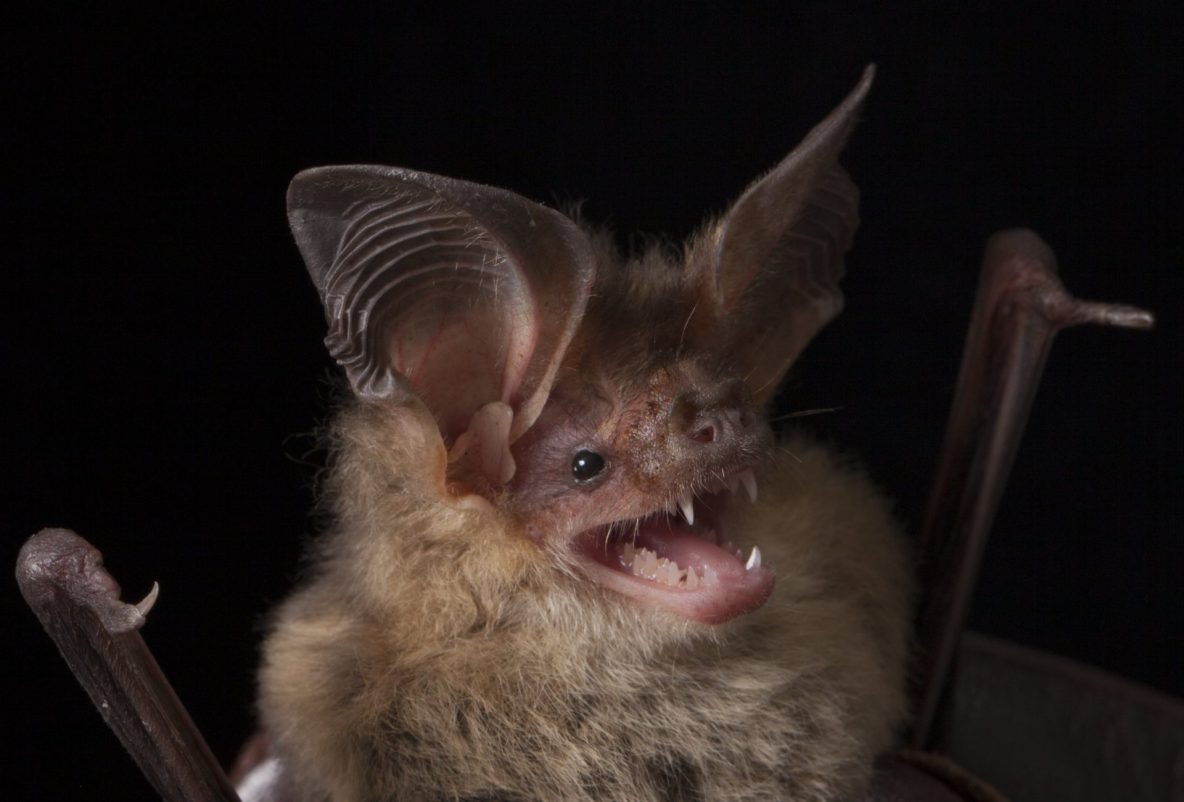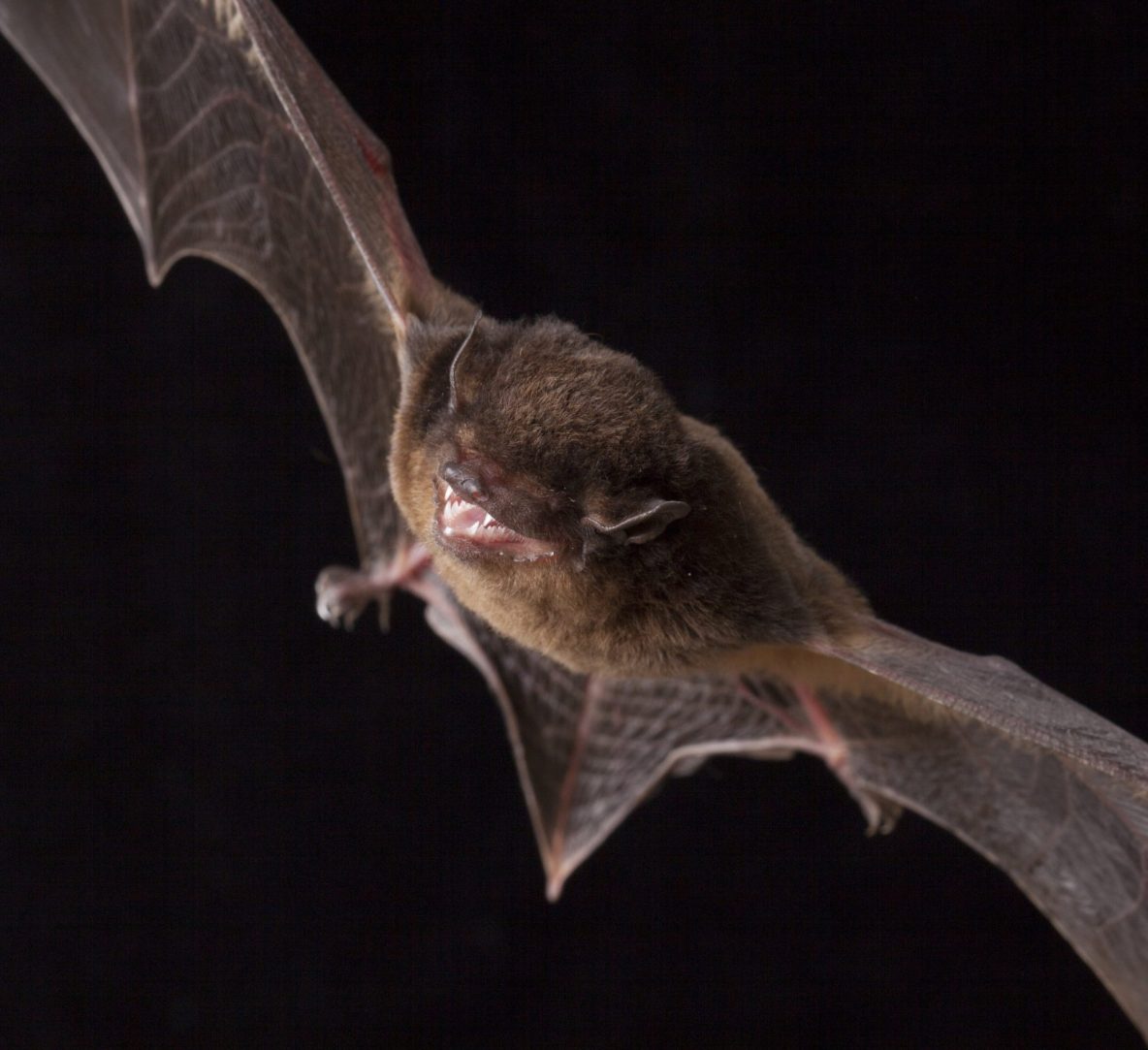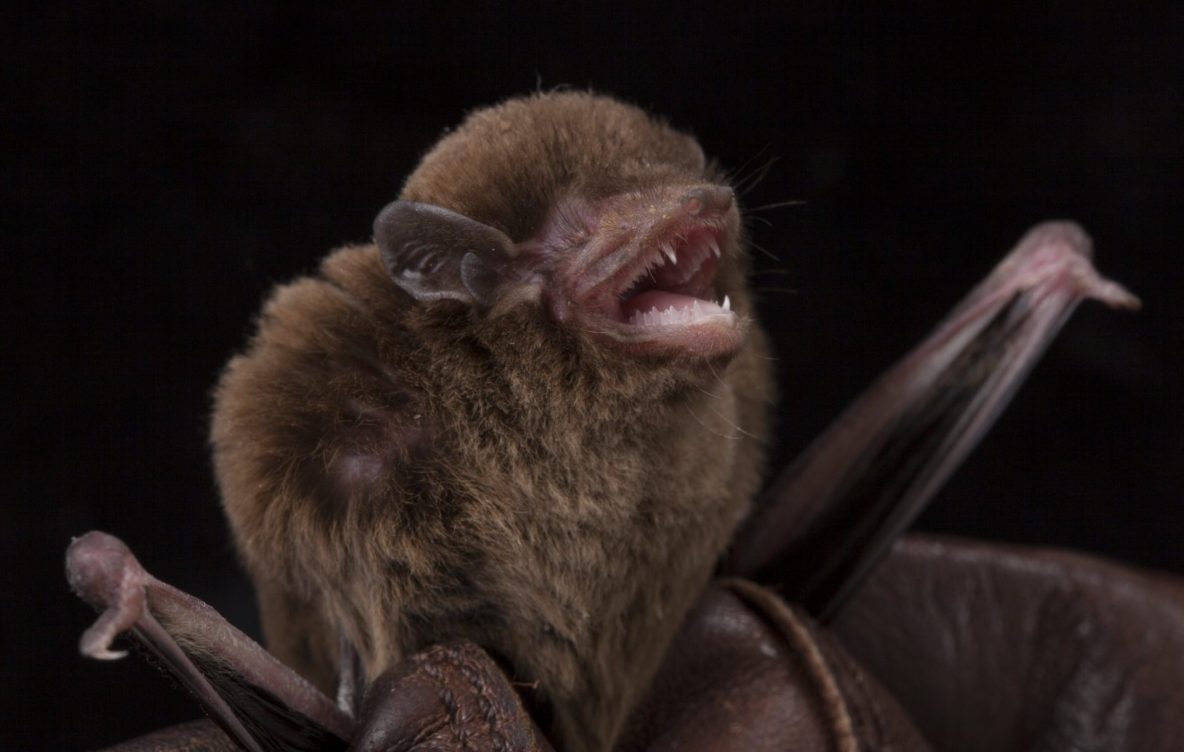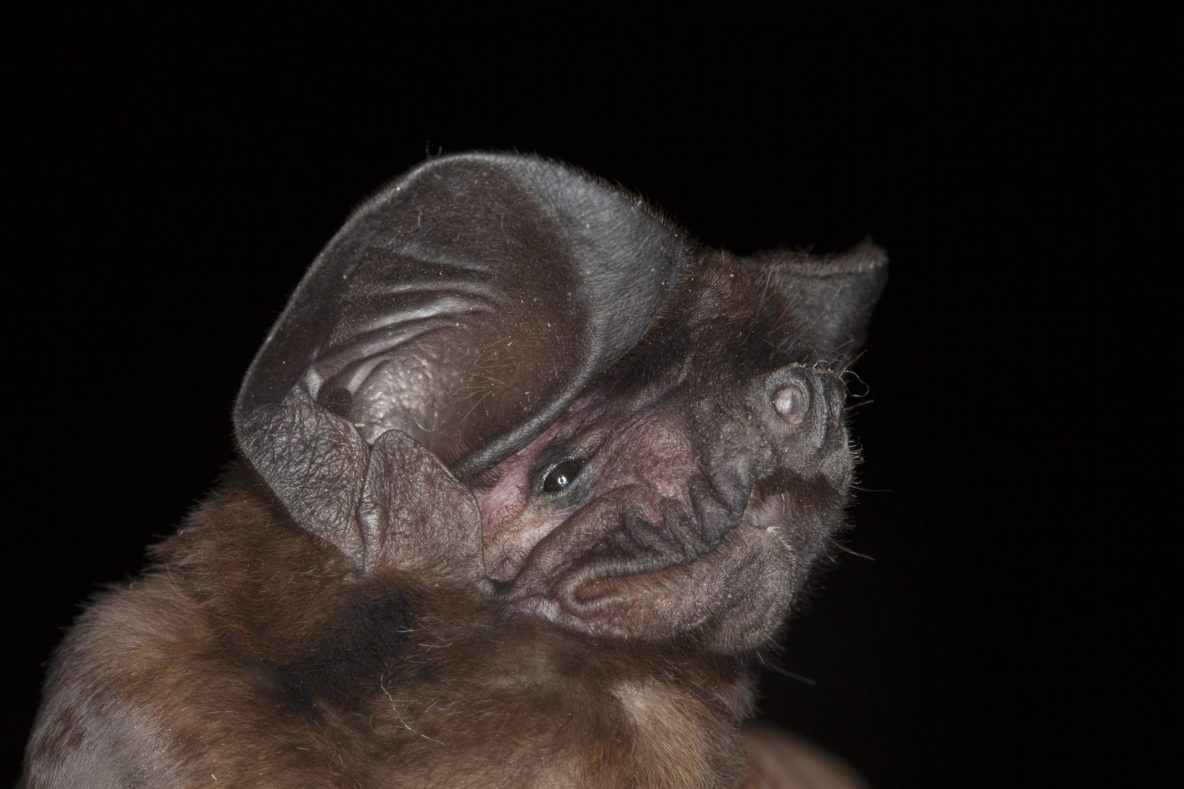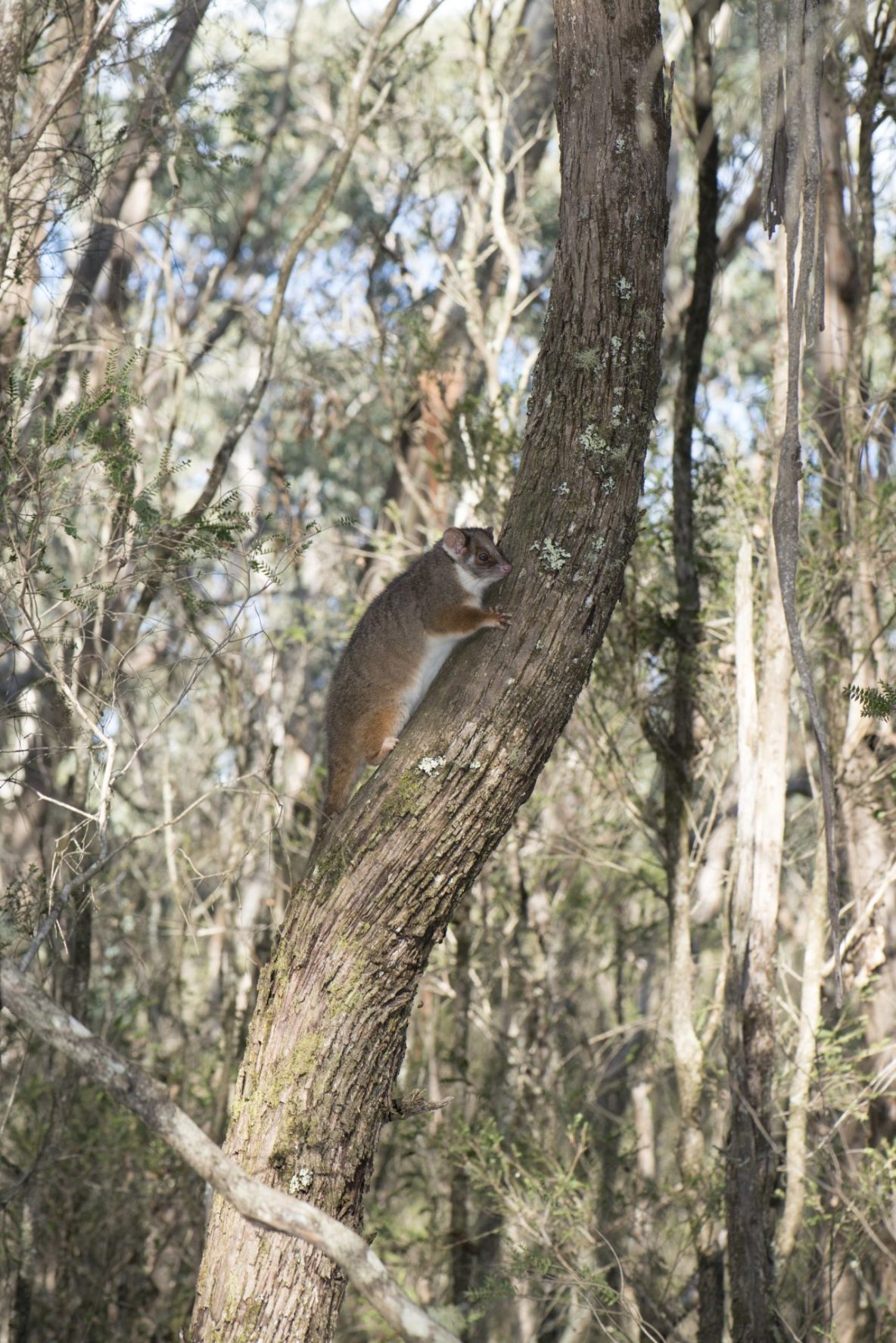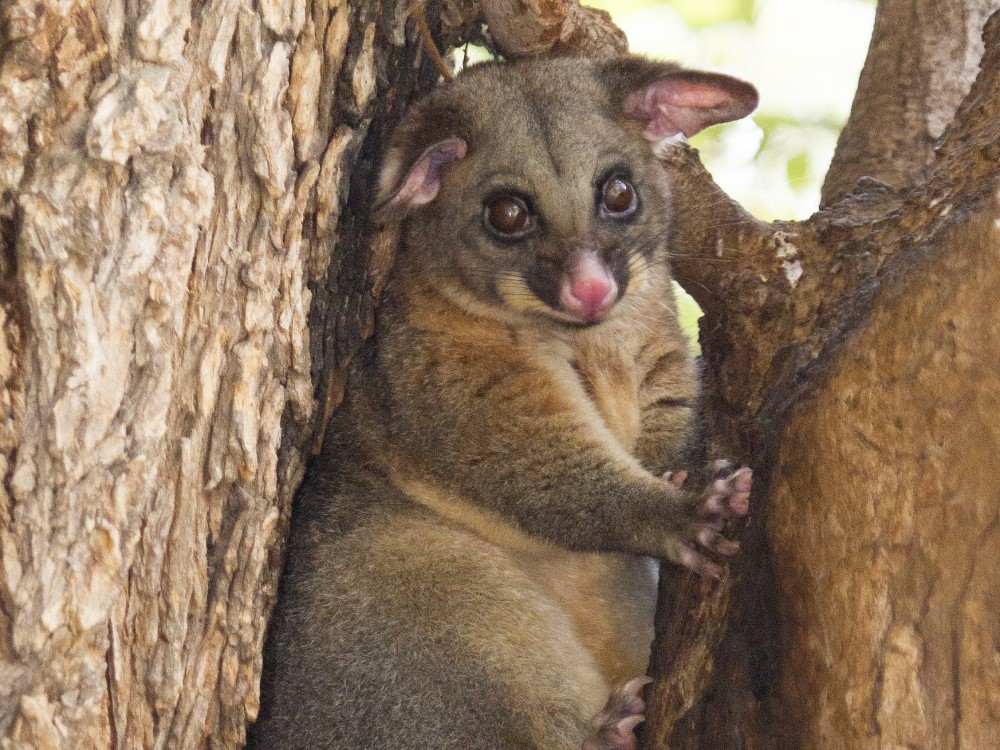Scientific Name Tachyglossus aculeatus Size 40-55cm Diet Ants and termites. Habitat Forests, woodlands, heath, grasslands and arid environments.
Lesser Long-eared Bat
Scientific Name Nyctophilus geoffroyi Size Body up to 5cm long (weight 10g) Diet Insects. Habitat Roosts in hollows and fissures in forests, woodlands, mallee, farmland and urban areas in colonies of up to 15. Also in ceilings, hollow walls, unused roller doors and canvas awnings in suburban areas.
Gould’s Wattled Bat
Scientific Name Chalinolobus gouldii Size 15g weight Diet Variety of insects, including scarab beetles, caterpillars, crickets and moths. Habitat Roosts in hollows in old trees, and occasionally in ceilings or basements of buildings in colonies of up to 40.
Chocolate Wattled Bat
Scientific Name Chalinolobus morio Size 60mm (weight 9g) Diet Mainly small moths. Habitat Roosts in hollows in old trees, as well as disused birds’ nests in colonies from 20 to several hundreds.
White-striped Freetailed-bat
Scientific Name Tadarida australis Size Up to 10cm Diet Insects. Habitat Roosts in hollows in old trees and under loose bark, in dead stumps and the ceilings of buildings in colonies of up to several hundred.
Ringtail Possum
Scientific Name Pseudocheirus peregrinus Size 30-35cm Diet Mainly eucalyptus leaves, although they will eat other foods such as fruits, flowers and leaves of other native trees. They are also known to eat rose buds in suburban areas. Habitat Rainforests, woodlands, eucalypt forests, dense scrub and suburban gardens.
Common Brushtail Possum
Scientific Name Trichosurus vulpecula Size 55cm Diet In the wild, the diet consists of leaves, blossoms and fruits, but in suburbia it will eat almost anything. Habitat Urban areas, forests and woodlands and heath.

